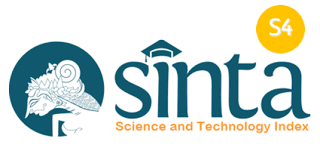PENJERAPAN KROM LIMBAH CAIR PROSES PENYAMAKAN KULIT OLEH ZEOLIT ALAM
Main Article Content
Abstract
Chromium removal and recovery carried out by using precipitation process was reported to become costly at lower cation concentration. Therefore, the use of natural zeolit, as one of mineral abundance in Indonesia, becomes an important ion exchanger and adsorbent for this cation at low concentration. In this research, chromium’s tanning wastewater was first reacted with a precipitating agent, sodium hydroxide 1,5 M. The remaining, chromium in the filtrate, was passed through columns packed with zeolit . Tanning wastewaters are originated from two tanneries, namely Gunung Putri and Citeureup in Kabupaten Bogor. The zeolite used is originated from Cikalong, Cikembar and Lampung. The first two are mordenite type with purity grade 79% and 84% respectively. The zeolite originated from Lampung was clinoptilolite type with 94% purity grade. The capacity of cation exchange of Cikalong zeolite, Lampung and Cikembar were 94,14, 89,62 and 79,70 respectively. The capacity of chromium adsorption of Cikalong zeolit, Lampung and Cikembar under chromium synthetic solution with batch operation were 1710, 1629 and 1150 mg/kg respectively. The capacity of chromium adsorption of Cikalong zeolit Lampung, and Cikembar under chromium synthetic solution with fixed-bed operation were 1350, 1507 and 399 mg/kg respectively. Under spent tanning solution with fixed-bad method the capacity of chromium adsorption of these three zeolit were 82, 160, and 82 mg/kg respectively.
Downloads
Article Details
Submission of a manuscript to Jurnal Purifikasi means that the work has never been published in another journal and is not under consideration for publication elsewhere. The author hereby agrees to submit the copyright of the manuscript and its contents to Jurnal Purifikasi, if accepted for publication. Accepted manuscripts will be published in printed form where the ISSN is bound in printed form, not in online form (pdf). Authors are not allowed to publish their work in other forms (journals) without permission from the Jurnal Purifikasi manager.
By submitting a manuscript, the author is deemed to know all the rights and obligations attached to each manuscript.








